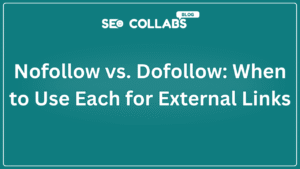External links, or outbound links, play a crucial role in SEO by enhancing credibility, user experience, and topical authority. Here’s a structured breakdown of their importance and best practices:
Table of Contents
1. Enhancing Credibility and Trust
Authority Signaling
Linking to reputable, authoritative sources (e.g., government sites, academic journals, or industry leaders) signals to search engines that your content is well-researched and trustworthy. For example, citing NASA in an article about climate change boosts your page’s reliability.
Avoiding Spam
Linking to low-quality or irrelevant sites can harm your SEO. Always prioritize high-quality, relevant domains to maintain trust.
2. Improving User Experience (UX)
Resource Value
External links provide readers with additional information, keeping them engaged and reducing bounce rates. For instance, linking to a detailed study or tool enhances the depth of your content.
Also Read
Balanced Linking
Avoid excessive outbound links that disrupt readability. Aim for relevance and value over quantity.
3. Establishing Topical Relevance
Niche Alignment
Links to sites within your niche (e.g., a tech blog linking to software reviews) reinforce your content’s focus, helping search engines understand your site’s expertise.
Contextual Clarity
Links clarify the context of your content. For example, linking to a medical journal in a health article strengthens topical relevance.
4. Anchor Text Optimization
Natural Language
Use descriptive, natural anchor text (e.g., “according to recent climate studies”) instead of keyword-stuffed phrases. Over-optimization (e.g., “best SEO tools”) can appear manipulative.
Relevance
Ensure the anchor text aligns with the linked content’s topic.
5. Technical Considerations
Followed vs. Nofollow
- Use the following links (default) to endorse credible sources.
- Apply nofollow attributes (rel=”nofollow”) for untrusted or paid links to avoid passing equity (e.g., affiliate links).
Link Equity
While external links don’t directly boost your SEO like backlinks, they contribute to a natural link profile, which search engines favor.
6. Strategic Benefits
Reciprocity Opportunities
Quality outbound links may encourage others to link back, though this should not be the primary goal.
Algorithmic Favor
Google’s guidelines emphasize natural linking patterns. Relevant, user-focused external links align with E-E-A-T (Expertise, Authoritativeness, Trustworthiness).
Best Practices for External Links
Quality Over Quantity
Link only to high-authority, relevant sites.
Contextual Placement
Insert links where they add value (e.g., citations, further reading).
Audit Regularly
Use tools like Ahrefs or SEMrush to check for broken or toxic links.
Balance with Internal Links
Maintain a mix of internal and external links to guide users and distribute page authority.
Conclusion

External links are a cornerstone of ethical SEO, fostering trust, enhancing UX, and clarifying content context. When used strategically, they strengthen your site’s authority and align with search engine guidelines. Focus on relevance, quality, and natural integration to maximize their impact.




